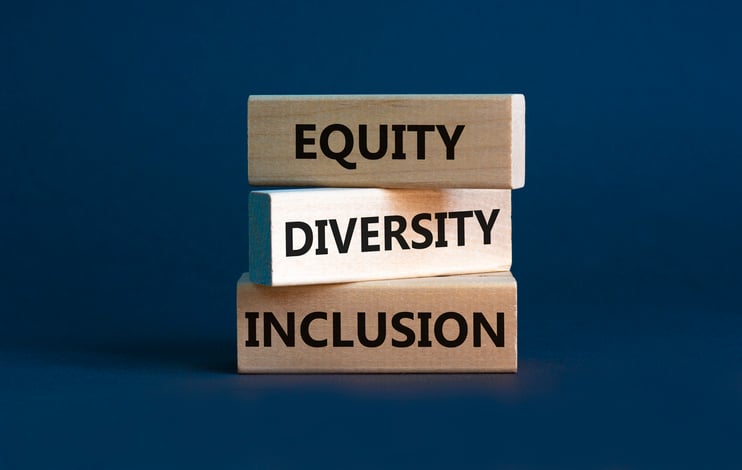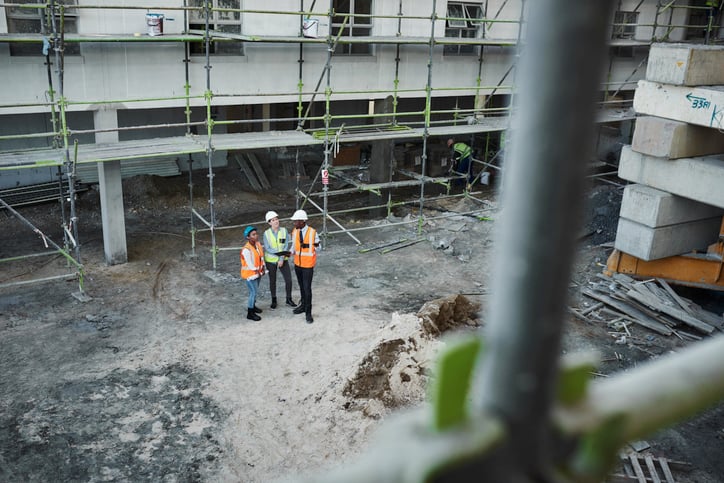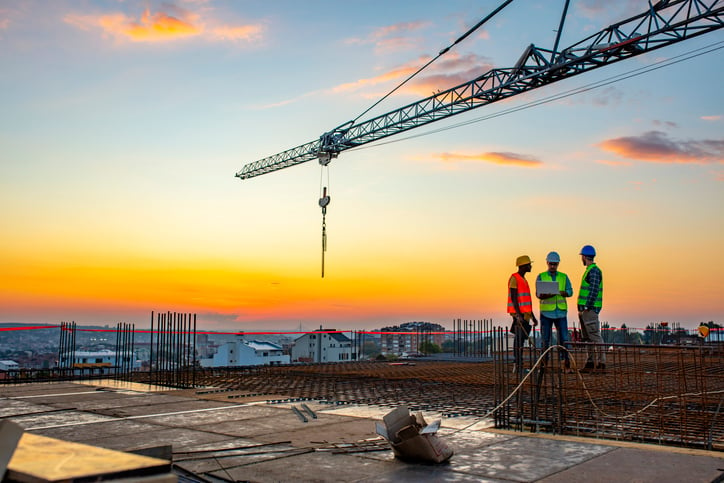
Editorial Note: This article was brought to you courtesy of Rose Morrison, managing editor of Renovated.com.
The construction industry is one of the world's largest and most important industries. Companies in construction are responsible for building and maintaining critical infrastructure for towns, cities, and countries. The built environment wouldn't be what it is today without the industry's success, growth, and technological advancements. However, a significant lack of diversity and inclusion is a longstanding issue in the construction industry.
While the topics of diversity and inclusion are frequently discussed in the modern workplace, the construction industry still lags behind other sectors in terms of diversity inclusion.
Is it possible for construction companies and other industry leaders to minimize or eliminate the diversity gap in the industry?
What's inside
What Is Diversity?
Diversity is a term that describes everyone's unique qualities and characteristics and how they come together to form someone's identity.

Examples of the human differences that contribute to diversity include, but are not limited to, age, social class, race, ethnicity, nationality, gender identities, religion, sexual orientation, and others. Organizations can improve their diversity by recruiting and hiring employees with various cultural and social backgrounds.
Because diversity is lacking in industries other than construction, some professionals advocate for diversity quotas. These gender and racial diversity quotas require companies to hire a candidate of a specific race or background. There's some debate over whether or not diversity quotas are justified or successful in helping industries achieve true diversity.
Analyzing the Diversity Gap in the Construction Industry
One way to determine the level of construction diversity is to look at the Bureau of Labor Statistics (BLS). The BLS states that, in 2021, the construction industry employed 11,271,000 people.
Of those 11,271,000 people, here are the percentages of employees who were women, white, Black or African American, Asian, and Hispanic or Latino.
- White: 9%
- Hispanic or Latino: 6%
- Women: 11%
- Black or African American: 3%
- Asian: 1%
The data above illustrates the lack of diversity in construction and shows how most of the sector consists of white male workers. In the same year, it was found that the white population in the U.S. declined by 8.6% since 2010, showing how the country is becoming increasingly multicultural. However, the white population remains the country's largest ethnic group.
Regarding gender diversity, 11% of women working in the construction industry can break down into various occupations. The National Association of Women in Construction (NAWIC) published statistics regarding the percentages of women in construction according to their occupation. Here is a breakdown from NAWIC:
- Professional and management: 44%
- Sales and office: 28%
- Service occupations: 1%
- Production, transportation, and material moving: 9%
- Maintenance: 1%
Women in construction typically only work in the three largest occupations listed above. It's rare to find women in maintenance or production, transportation, and material moving jobs.
Some Construction Industry Practices Serve as Barriers to Achieving Diversity
CEO of Turner Construction, Peter Davoren, feels that a "caste system" exists on job sites in the construction sector. In this system, some workers are placed above others, with management above everyone in a hierarchy. Davoren believes the existence of this system contributes to an exclusionary environment in the industry.
For example, Hispanic and Latino construction workers often do not have opportunities to advance in their careers. Government policies at the federal, state, and local levels require general contractors to turn over a percentage of their sub-contracts to companies owned by racial minorities.
These sub-contracts are also referred to as "set-asides." This seems like a positive requirement because it helps provide opportunities for minorities. However, the program does a poor job of helping these companies.
For example, some owners report receiving calls to work on contracting jobs they know they cannot complete. The company loses out on the opportunity, but the general contractor can say they've made good-faith efforts to meet the sub-contractor requirements.
The Importance of Creating a Diverse Workforce in Construction
So, why should companies in the construction industry prioritize diversity? There are a few reasons why closing the diversity gap is critical.

First, many professionals would agree it's simply the right thing to do. As stated above, the country is becoming increasingly diverse. In response, the industry should follow suit by developing a diverse workforce, essentially reflecting those societal shifts.
Additionally, diversity ensures everyone has a seat at the table and a sense of belonging, regardless of the qualities and characteristics that make them human. Another reason is that diverse workforces can offer several benefits, which are discussed in the next section.
The vast majority of organizations – around 80% – will justify efforts to increase diversity by saying "there's a strong business case" to do so. However, this language implies that companies should only focus on diversity for one reason: Because it helps them meet their bottom lines. It frames employee variety as a business asset, not a moral necessity.
Caring about diversity in the workplace cannot be quantified. While statistics illustrate the lack of diversity in construction, the numbers alone are not enough to effectively convince industry leaders and company executives to become more diverse.
The Benefits of Diversity in the Construction Industry
What are some of the benefits of increasing diversity in the construction industry?
- Diversity helps overcome ongoing labor shortages.
- Diversity improves company performance and helps companies deliver on client outcomes.
- Diverse workforces consist of engaged employees.
- Diversity can improve a company's reputation.
- Diversity can drive innovation.
- Diverse workforces attract a more diverse pool of candidates.
- Diversity can improve employee retention and reduce turnover.
Keep in mind that the benefits of diversity are not the sole reason a company should seek more diverse candidates. In other words, companies should work towards achieving diversity for reasons other than these potential benefits.
Steps the Industry Should Take to Close the Diversity Gap
Creating a diverse workforce does not and cannot happen overnight. It takes time for companies to implement diversity and inclusion strategies, some of which might not prove effective immediately.

Below are some ways construction companies can work to close the industry's diversity gaps and create a more welcoming workplace for people from all walks of life.
- Prioritize ongoing diversity training
- Increase recruiting efforts at HBCUs
- Overcome language barriers
- Improve community outreach
Prioritize Ongoing Diversity Training
In all aspects of the construction sector, training is essential. Anyone involved in the industry knows that training is not something that can be put on the back burner or done informally.
Consider what would happen if companies did not implement operator training. It's suggested that around 80% of unscheduled downtime occurs because of operator error. If operators, for example, were trained properly, companies could avoid extended periods of downtime.
The same concept applies to diversity training. If companies do not provide ongoing diversity training opportunities, it could increase the likelihood of conflict or discriminatory behavior among employees. All employees should prioritize diversity, meaning leaders must also receive diversity training. Cultural changes in the workplace often happen from the top down.
Increase Recruiting Efforts at HBCUs
Construction companies can also focus on changing their recruiting, interviewing, and hiring processes. Leaders can work directly with the company's HR department to review existing policies and procedures to analyze recruitment, interviewing, or hiring strategies to identify any conscious or unconscious bias in their processes.
From there, organizations are better positioned to address the shortcomings of their recruiting efforts and implement change. Companies should consider exploring new approaches to finding skilled workers. For example, organizations can dedicate more time to recruiting minority candidates from Historically Black Colleges and Universities (HBCUs).
The Associated General Contractors of America (AGC), also known as The Construction Association, formed a partnership with Procore Technologies, Inc. and raised $500,000 for a scholarship program to support minority students studying construction at an HBCU.
Overcome Language Barriers
Since most construction workers identify as male and are white, it's more than likely that English is the most commonly spoken language on a job site or at a company's headquarters. In 2019, one study in Malaysia found that language barriers in construction affected worker productivity. Productivity losses can negatively impact companies and potentially reduce profitability.
On a construction job site, miscommunication can:
- Delay project completion.
- Put quality of work at risk.
- Put foreign workers at risk of injury.
- Lead to wasted materials and resources.
So, how can a company overcome language barriers? One way is to offer an immersive language training program for employees who are not fluent in English if the company operates in the U.S.
Company leaders can also use visual means to communicate, but they should not rely on this approach alone. Teams can also hire bilingual employees and invest in materials like safety manuals, construction plans, employee handbooks, and other documents translated into other languages.
Improve Community Outreach
Last but not least, spending time reaching out to the local community can help companies position themselves to develop a diverse workforce. Companies can visit local school districts to make educational presentations, attend high school job fairs, offer apprenticeships to future job candidates, and work with other companies to host fundraising events.
These ideas should be designed to target underrepresented groups in the industry. Based on the data points above, some of these groups are women and people who are Black and African American, Asian, and Hispanic or Latino.
Other groups include the LGBTQ+ community, people with disabilities, and veterans. Using these strategies can increase awareness of the inner workings of the construction industry and may provide young people with a potential career path to pursue.
Building a Diverse Construction Workforce of the Future
As mentioned above, significant shifts in the construction industry will not happen overnight. Companies and their leaders must work together to address the lack of diversity in the workforce.

All people deserve a chance to break into an industry that supports the country's infrastructure, but the sector must first offer them more opportunities and create a more inclusive culture.
There's no finish line to cross when a company achieves diversity. Developing and maintaining a diverse workforce will present challenges to organizations but can offer plenty of benefits too. Consider using some of the tips above to increase diversity in the overall construction industry.
This is a guest post written by Rose Morrison, managing editor of Renovated.com